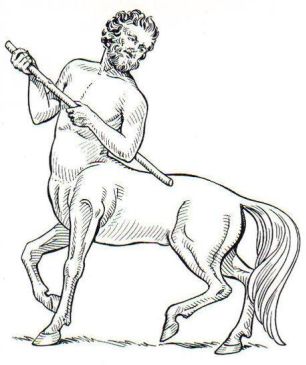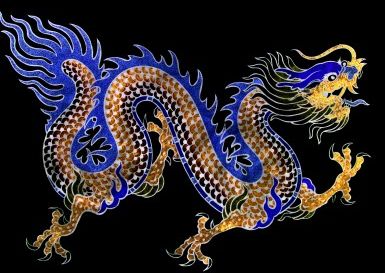Feedback archive → Feedback 2013
Here there be dragons … but no centaurs

What’s the difference between believing in centaurs and believing in dragons? Jamie L. from Australia writes in response to The Year the Water Dragon Roared:
I am a Christian and a subscriber to your magazine. I would love to find more evidence that supports our view of a creator and loving God, however sometimes I think we are just reaching. If we use this kind of rationale, we could also perhaps say that the Egyptians knew of half men half horse centaurs. I think we can do better than this, don’t you?
CMI’s Carl Wieland responds:
Dear Jamie
Thanks very much for sending in your comments. It’s important not to overreach, as you indicate, but I wonder if you have thought the centaur-dragon matter through carefully?
I ask this because the only way I can see that the proposed dragon-dino link would be even remotely comparable to your Egyptian/Centaur example would be if there were
- Vast numbers of fossils of real, centaur-like creatures (CLC’s) in the rock record;
- No CLC’s alive today;
- Strong claims that CLC’s were supposed to have died out vast ages before people were supposed to have existed, yet there were:
- Tales of Centaurs, remarkably similar to these CLC’s, widespread throughout many different ethnic and geographic groupings.

As far as I can tell, not one of these applies. Concerning (d), Centaur stories seem to be largely (perhaps exclusively) restricted to Greek mythology. Whereas this quote about dragons is quite different:
“Of all the hoary old monsters, dragons are the most persistent, appearing everywhere from mall crystal shops to Disney movies … Dragon images have been found on the Ishtar Gate of Babylon, on scrolls from China, in Egyptian hieroglyphs and Ethiopian sketches, on the prows of Viking ships, in bas relief on Aztec temples, on cliffs above the Mississippi river and even on bones carved by Inuits in climates where no reptile could live”.1
Perhaps I could go through the reasoning concerning the dragon-dinosaur link briefly again here, as it is definitely not that creationists are saying that because we have dragon stories, therefore we can be confident that there were real dragons in the past—which is the way your argument appears to be constructed. Rather, we are saying that
- God’s Word makes it plain (e.g. Exodus 20:11, when carefully thought through) that mankind and dinosaurs must have co-existed at one time.
- The rock record reveals that there were vast numbers of dinosaurs on Earth, many of which fit the descriptions of ‘dragons’ so well that if people had observed them, we would expect the sorts of tales (cultural memories if you like) that are in existence around the world. And what’s more, one would expect them to have a worldwide distribution, because all cultures have descended from the inhabitants of the Ark, and since the Flood-deposited rocks around the globe have fossils of dinos that were not extinct yet at the time of the Flood, Noah’s family would have been well aware of dinosaurs of many types.
In fact, one could go so far as to say that given the large numbers of dinosaurs which, by creationist reasoning, were buried in the Flood, and given how impressive some of these creatures must have been, it would be actually an argument AGAINST Genesis history if there were NO such cultural memories.
Furthermore, I took pains in the article to point out that one of the world’s leading evolutionary scientists recognized the dilemma of having to write all those dragon stories and their similarities to dinosaurs off as ‘sheer coincidence’, and went to great lengths to try to construct a scenario to explain it away. He would hardly have had to do that for centaurs. I also know of other evolutionists who have tried to explain it away by having early man stumble across dino fossils and somehow figuring out how they would have looked in life. (Again, that explanation has not caught the imagination of most other evolutionists, because it is fraught with impossibilities to those who know how hard it is to reconstruct the image of a dinosaur from buried bones without the specialist knowledge accumulated over generations in modern times.)
Also, the article referred to the artefacts that give strong support to the suggestion (did you look them up?) that dinosaurs were still alive at the time. For example, Bishop Bell’s tomb drawings; they are not actually like the dragons of dragon stories, but are obviously still dinosaurs, part of the same group as those dinosaurs who were like the dragons of old. If those Bell drawings had been of fierce dragon-like creatures, they could have been readily written off as just a ‘dragon dragon’ so to speak.
Finally, there was the evidence we cited, and linked to, that the ‘dragons’ in the fossil record could not have died out tens of millions of years ago, or else those fragile molecules would not have survived.
I would humbly submit that there is nothing remotely like these sorts of claims above that involve centaurs or any other creature group, real or mythological.
I do concede that some see dragons in every drawing from the ancient world, like purported images of Jesus in cheese toast or clouds. And as demonstrated in the ‘party game’ of ‘Chinese whispers’, tales get distorted with telling and retelling. However, when there is an extraordinary worldwide anthropological phenomenon, Occam’s Razor drives the search for a rational explanation that is non-random. Given the truth and authority of the Bible, the ubiquitous nature of dragon stories, including the references to dragons (and the descriptions in Job) in the Bible, would seem to be strong confirmation of its account of history.
Thanks once again, and thanks for the chance to think this matter through once more.
Kind regards in Christ,
Carl W.
References
- The New York Times, April 29, 2003, p. F1, quoted in BioEssays 25:727–733, copyright 2003 Wiley Periodicals, Inc. Return to text.





Readers’ comments
Comments are automatically closed 14 days after publication.